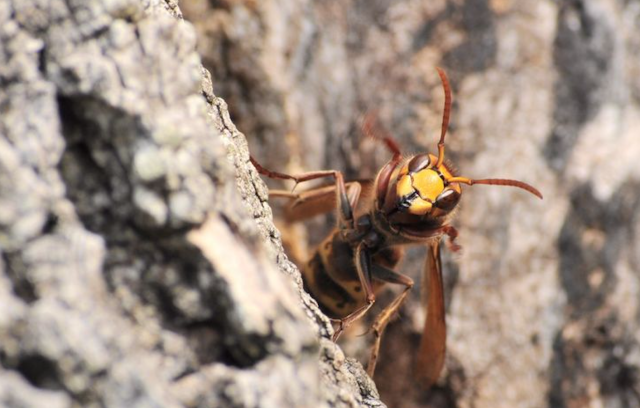Man with Disability in the US Attacked by 1,000 Killer Bees, Stung 250 Times
 |
| Illustration of large Asian bees. (Shutterstock) |
Introduction:
In a terrifying incident, a 60-year-old, one-legged man from Arizona and his dog were attacked by a swarm of 1,000 killer bees, resulting in over 250 stings. The horrifying situation only came to an end when firefighters intervened, using a hose to wash away the insects. Witnesses reported that approximately 1,000 bees attacked John Fischer, a 60-year-old disability survivor, and his dog, Pippin, while they were taking a stroll on the outskirts of Florence last week.
The Chilling Ordeal:
Amidst the swarming insects, Fischer, wearing a shirt to shield his body, struggled to crawl on the ground. Fischer, who lost one of his legs about eight years ago due to an infection, endured over 250 stings during the gruesome attack. He was stung on his arms, eyes, mouth, ears, legs, and back, and also sustained scratches from crawling on the ground after his wheelchair overturned. "I crawled for a while to try and get away from where they were, but they, of course, just followed me," Fischer told Arizona Family. He mentioned that his dog, Pippin, was stung over 50 times and had to be taken to an animal hospital.
Pippin's Current Condition:
Pippin is now back home but faces a 9/10 chance of survival, given his poor condition. "He's sick. We're trying to get him to drink. He's really sick, and what I see is he's very lethargic. We also gave him Benadryl, so that will knock him out," Fischer said.
The Aftermath and Potential Risks
The Impact on Fischer's Health:
The severe bee stings inflicted significant damage on Fischer's health. Despite his disability, he fought through the excruciating pain and managed to seek help. However, the aftermath of the attack left him physically and emotionally traumatized. The extensive bee stings caused inflammation, pain, and possible allergic reactions, which can lead to further complications for someone already living with a disability.
The Importance of Bee Sting First Aid
Seeking Immediate Medical Attention:
In cases of bee stings, prompt medical attention is crucial to minimize the potential risks and complications. Individuals, especially those with disabilities or underlying health conditions, should not delay seeking medical help after a bee sting incident. Even if the symptoms appear mild initially, they can rapidly escalate, leading to life-threatening situations.
Preventive Measures and Bee Safety
To avoid similar incidents, it is important to take preventive measures when venturing into areas known to be inhabited by bees. This is particularly vital for individuals with disabilities, who may have limited mobility or reduced ability to escape in case of an attack. Consider the following tips to stay safe:
1. Research the Area: Before visiting any outdoor location, research whether it has a history of bee activity. Avoid areas with known beehives or bee-infested trees.
2. Dress Appropriately: Wear protective clothing such as long-sleeved shirts, pants, socks, and closed-toe shoes. Tuck in your pants into your socks to prevent bees from crawling inside.
3. Avoid Perfumes and Bright Colors: Bees are attracted to strong scents and bright colors. Opt for unscented personal care products and wear light-colored, neutral clothing to minimize their interest.
4. Stay Calm and Avoid Swatting: If bees are present, remain calm and avoid swatting or making sudden movements. Swatting can provoke bees and increase the risk of stings.
Conclusion:
The harrowing experience of John Fischer and his dog, Pippin, being attacked by a swarm of killer bees serves as a reminder of the potential dangers present in nature. Individuals with disabilities must take extra precautions and prioritize their safety when venturing into bee-prone areas. Prompt medical attention and preventive measures can help mitigate the risks associated with bee stings. By raising awareness and adhering to bee safety guidelines, we can strive to create safer environments for everyone to enjoy the outdoors without fear of such traumatic encounters.